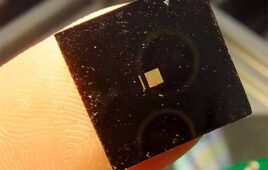
[Image from Tagosaku on Flickr]
The treatment involves a sphenopalatine ganglion (SPG) block that does not need needles. It uses a small, flexible catheter that is put into each nostril that delivers a local anesthetic to the SPG, which has often been considered the nerve bundle that causes migraines, that is in the back of the nose. The treatment disables the SPG and resets the headache circuit, reducing the need for migraine medication since it has an almost immediate effect. The treatment can also last for months at a time.
“This treatment, performed in an outpatient setting by an interventional radiologist, can safely relieve a child’s migraine quickly,” Dr. Robin Kaye, section chief of interventional radiology in the department of medical imaging at Phoenix Children’s Hospital, said in a press release. “By reducing the need for medications that come with serious side effects or intravenous therapies that may require hospital stays, children don’t have to miss as much school and can get back to being a kid sooner.”
Migraines are the third most common illness in the world, with 12% of the population suffering from migraines – including children. It is the sixth most disabling illness in the world, according to the Migraine Research Foundation. Every 10 seconds, someone in the U.S. alone goes to the emergency room because of migraines.
The symptoms of migraines can be debilitating, causing visual disturbances, noise sensitivity and even nausea, vomiting and dizziness. Migraine attacks can last anywhere from a few hours to a few days, leaving 90% of migraine sufferers unable to work or function normally in their daily lives. Excedrin did a video in 2016 that showed what it was like for migraine sufferers.
The research team conducted 310 treatments in 200 patients whose ages ranged from 7 to 18 at the Phoenix Children’s Hospital. The pain that the patients were going through was measured on a scale of 1 to 10, 10 being the worst pain. Ten minutes after the treatment was delivered, patients were asked again what their pain levels were. The researchers reported that there was a significant decrease of more than 2 points on the pain scale.
“While it isn’t a cure for migraines, this treatment has the potential to really improve the quality of life for many children,” said Kaye, who was also the co-author on this study. “It can be performed easily, without complications, and gives quick pain relief, which is important to parents who want to see their children happy, healthy and pain-free again. If needed, we can also repeat the treatment if or when the migraine returns.”
The researchers published an abstract on the Society of Interventional Radiology’s website.
[Want to stay more on top of MDO content? Subscribe to our weekly e-newsletter.]




